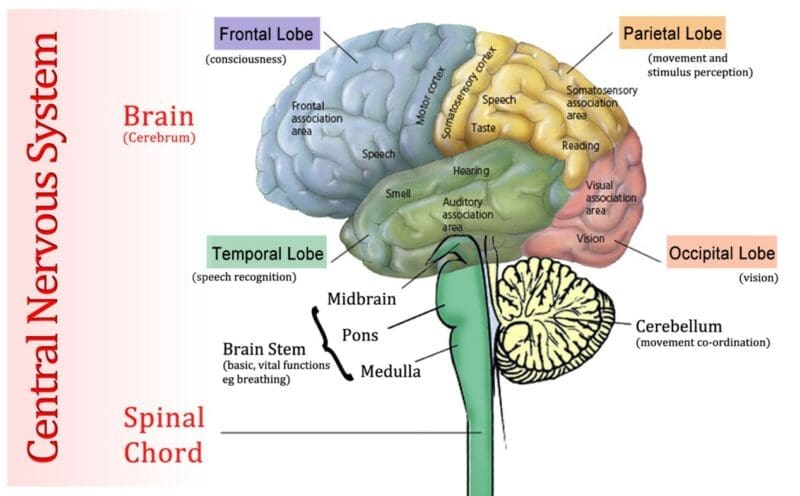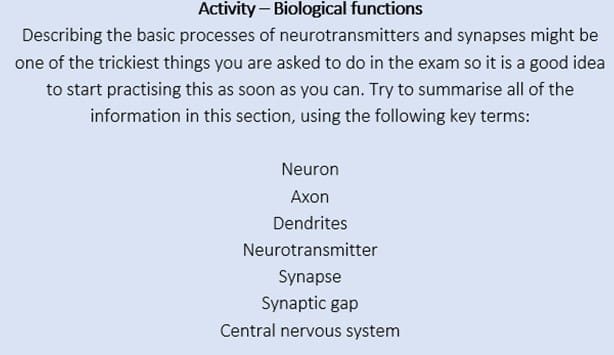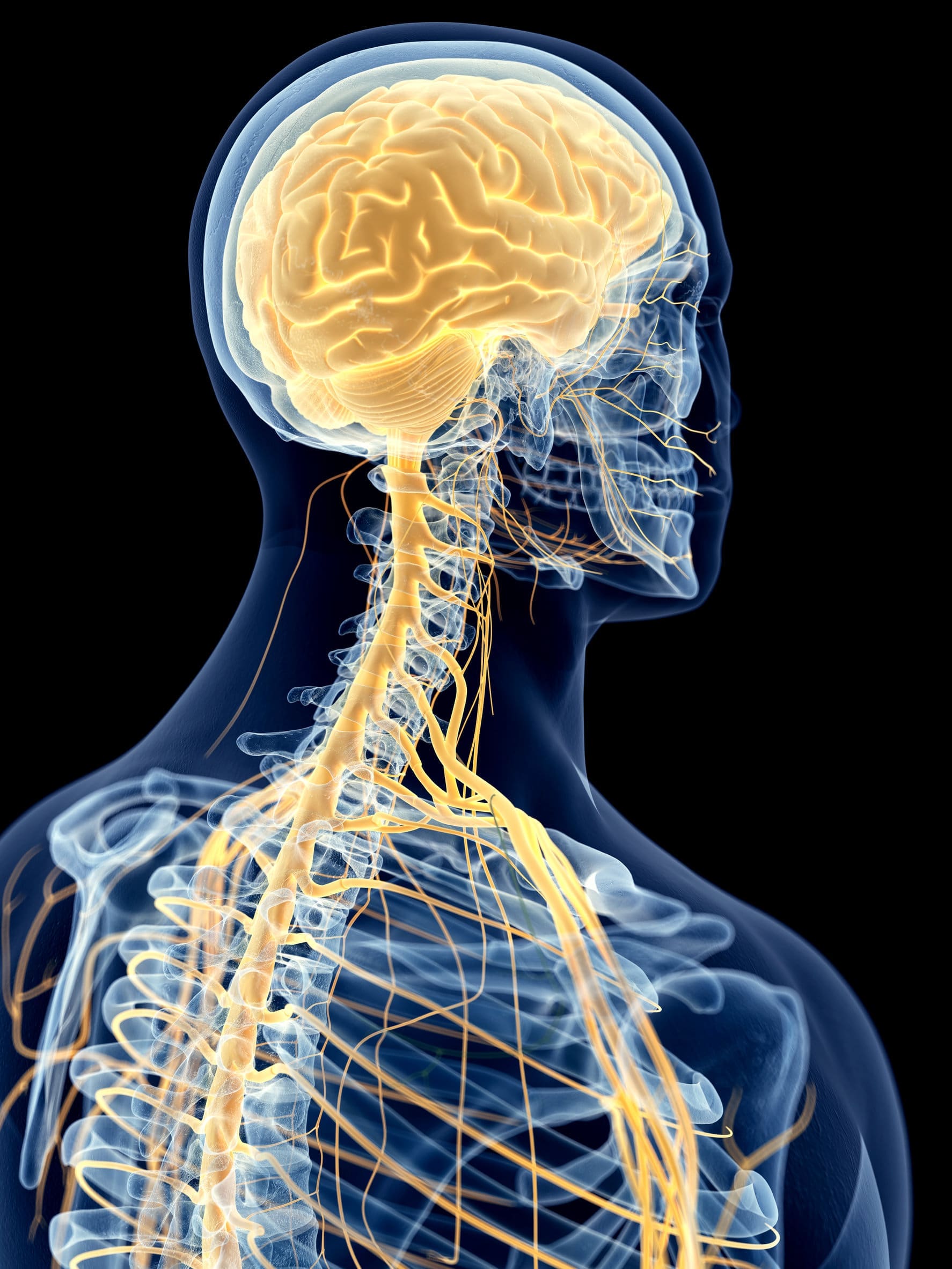The central nervous system consists of the brain and the spinal column and it is this system which processes information received from the senses and sends responses for the relevant parts of the body to act. It is referred to as ‘central’ because it is capable of integrating information from the whole body and subsequently can organise the whole body in response to messages.

In order to understand this in more detail, consider the following and think how the central nervous system responds when it receives the messages in the following scenarios – how does it organise the body in response to the messages in the following table?
| Message received by central nervous system | Central nervous system’s reaction |
| Touching something hot, which burns | Moving the hand away from the hot object |
| Seeing an object coming towards your face | Ducking out of the way or putting hands in front of your face |
| Smelling freshly baked bread | Mouth waters |
| Hearing a loud bang | Startle reaction is activated to move away from the noise |
| Tasting something sour (which isn’t meant to be) | Spit the food out |
All of the reactions in the right-hand side of this table are organised by the central nervous system in reaction to messages which have been sent by the synaptic functioning, described in the previous section. Reactions across synapses are thought to occur as quickly as half a millisecond, which is why humans are capable of responding so quickly – last time you touched something that was very hot, how quickly did your brain tell you to take your hand from it?




